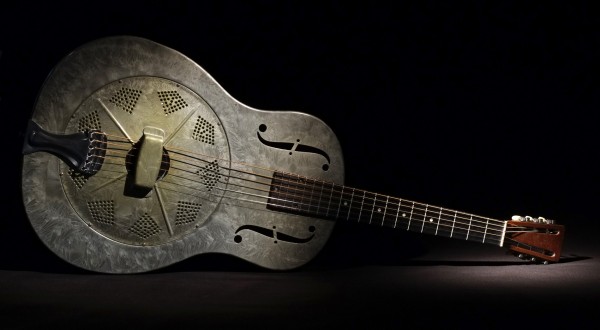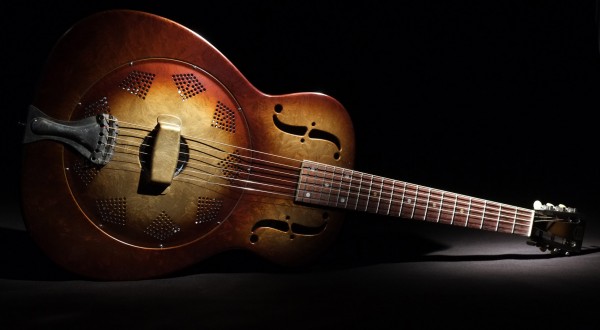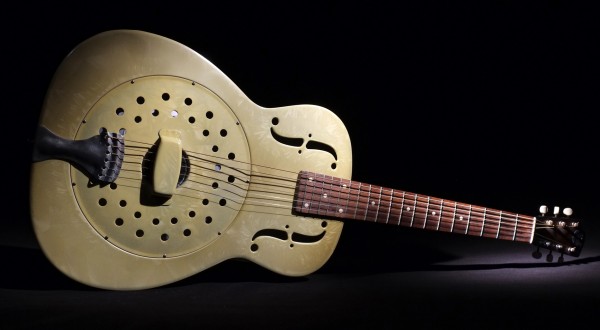1932 Silver Duolian
I did this guitar for a client. It had been in his family since it was new. It had been played by many different family members and at some point refinished in brown (I should say, over-sprayed, since some of the original frosted duco was still underneath). It was a cherished heirloom that had see some rough times and repairs. It was to be passed down to a son (guitar player) graduating this year from high school and continue its journey through an appreciative family. I was happy to be a part of this story.
This guitar needed some help. Not just a vintage style, frosted duco refinish, but some help with some repairs that weren’t quite up to snuff. The body got stripped and I did some necessary seam repairs and a bit of dent removal. Some of the prior repair work, although not pretty, needed to be left alone, since there was a reasonable risk of doing more damage while attempting the fix. The crystal paint helped to hide it. After the body and coverplate were prepped, they got a silver/gray/green vintage style frosted duco finish. As usual, when I removed the neck, there was a nice patch of the original paint. I matched that color as closely as I could. The originals are really very gray and not green. The green comes with time. So this guitar looks more like it probably did in the 1930s, than it would have if the original finish had survived until today.
The fretboard needed some love. The first five or so frets were shot and needed replacing. Not a simple task. The challenge of fretwork on old Duolians comes from many directions. First, there are no modern frets available with the same profile as the originals. So a backlog of saved old National frets can really come in handy, but isn’t always the answer. Then there is the problem of the fretboard itself being dry, dry, dry. All sorts of gnarly things happen when you pull the frets out. Even when you are very careful. Chips, flakes, mushy slots, each or all together. This fretboard had been repaired before and was just plain worn out. Time for a new ebony board. When I took the old one off, it came off in many pieces. Not typical and a good indication of it’s condition.
The cone, biscuit, tailpiece and tuners were all original. I re-profiled the cone and used the original biscuit and saddle to dial in the neck set. The tuners had one pretty badly bent button shaft. They almost always break when you try to straighten them, so no attempt was made. They were left intact, put in a bag and sent back with the guitar. A new set of StewMac Golden Age repro tuners took their place. A new nut was made. The guitar was set up. Then tuned up. Then I let it sit for a couple of days while things settled in and the sound opened up. If all is right, it almost always does. I shipped it back and it was gifted to it’s new heir. It’s journey continues.




